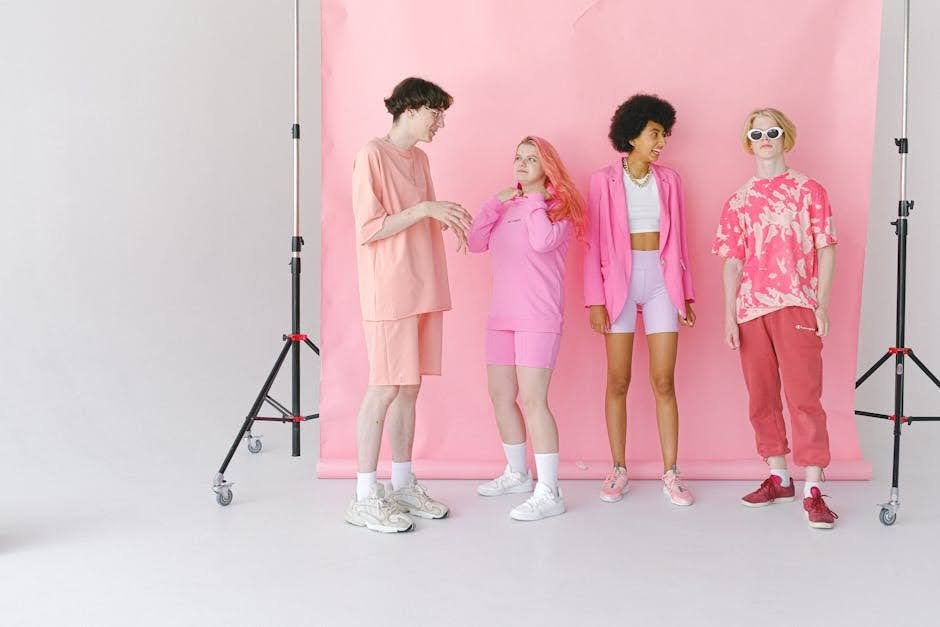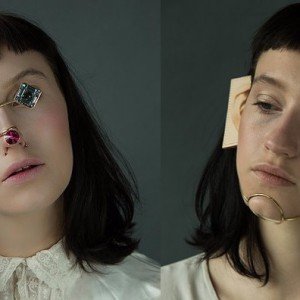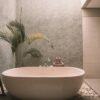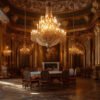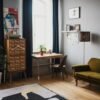Decoding the Different Types of Photo Studios
Every creative project thrives on the right environment, from a vibrant fashion shoot to a crisp product display. While on-location shoots offer unique charm, a dedicated photo studio provides the best control. It offers a blank canvas, ready for your vision.
Renting a photo studio can elevate your work. You gain a controlled setting, access to professional equipment, and true creative freedom, whether you shoot portraits, commercial content, or video projects.
In this guide, we will explore photo studio rentals. We’ll look at different types of studios and their unique features. We will also cover typical costs and how to choose the right space for your needs.
We aim to make studio hunting easy and help you find the perfect spot to bring your next creative project to life.
The world of photo studio rentals is diverse, offering various environments custom to different creative needs. Understanding these distinctions is crucial for selecting a space that perfectly aligns with your project’s vision. From capturing the soft glow of natural light to carefully controlling every photon, each studio type offers unique advantages.
Daylight and Natural Light Studios
These studios are characterized by large windows that allow ample natural light to flood the space. They are designed to harness the sun’s soft, diffused illumination, often featuring sheer curtains or diffusers to control intensity and spread.
- Unique Features: Large, often south-facing, windows; high ceilings; minimalist decor to maximize light reflection; sometimes equipped with blackout blinds for partial light control. Some studios even feature architectural designs, like the Santorini-inspired outdoor daylight studio mentioned in discussions about Miami facilities, offering unique aesthetic backdrops.
- Best Suited For: Lifestyle photography, portraits, boudoir shoots, maternity sessions, and any project that benefits from a bright, airy, and organic feel. They are particularly popular for fashion and product photography where a natural aesthetic is desired.
Blackout and Controlled Lighting Studios
In stark contrast to daylight studios, blackout studios are designed to eliminate all ambient light, providing a completely controlled environment. This allows photographers and videographers to sculpt light precisely using artificial sources.
- Unique Features: No windows or fully blacked-out windows; dark walls and ceilings to absorb light; robust electrical systems to support extensive lighting setups. These studios offer total control over shadows, highlights, and color temperature.
- Best Suited For: Product photography requiring precise lighting, commercial video production, cinematic shoots, special effects photography, and projects where consistent lighting is paramount, regardless of external conditions. Studios like those in New York often offer blackout options with RGB lights for dynamic visual effects.
Cyclorama (Cyc) Wall Studios
A cyclorama, or cyc wall, is a seamless, curved background that creates the illusion of an infinite space. The curved transition from floor to wall eliminates corners and edges, providing a clean, uninterrupted backdrop.
- Unique Features: Large, curved walls (often white, but can be painted); smooth, seamless surfaces; ample space for movement. Some studios, such as a 4,000 sqft white cyc studio discussed in Los Angeles, provide vast, uninterrupted backgrounds ideal for large-scale projects.
- Best Suited For: Fashion editorials, e-commerce product shots, car photography, large group portraits, music videos, and any project requiring a clean, seamless background without distractions. They are perfect for isolating subjects and compositing.
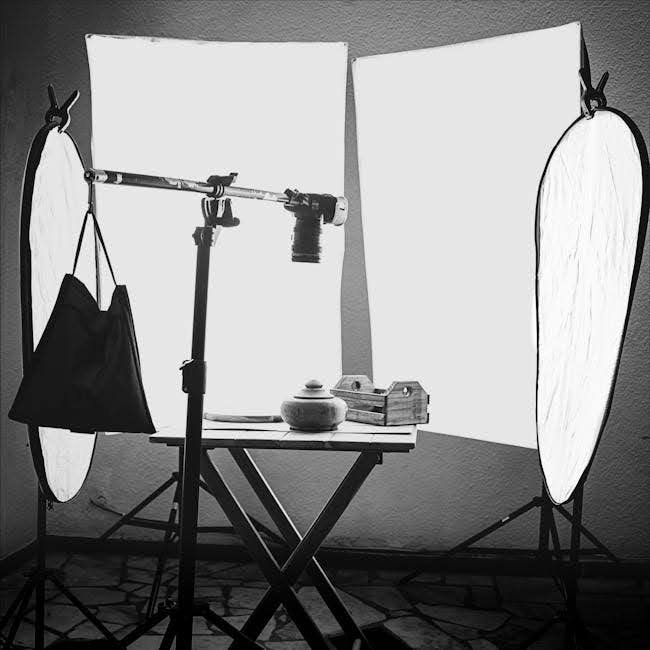
Specialized and Themed Studios
Beyond the fundamental types, many studios offer specialized features or pre-styled themes to cater to niche creative demands.
- Unique Features: These can range from built-in sets like residential-style living rooms and kitchens (ideal for lifestyle content or food photography) to unique architectural elements, textured walls, or even elaborate props. Some studios, like the Cinderloft in Victoria, BC, offer a “candid lifestyle space” with full kitchens and bedrooms. In contrast, others provide unique decors like jungle and gold lofts or rain rooms.
- Best Suited For: Music videos, creative conceptual shoots, specific branding campaigns, food photography, video interviews, and projects that benefit from a ready-made aesthetic or functional space. Studios with commercial kitchens are particularly valuable for culinary content creators.
Key Factors for Choosing the Right Photo Studio Rental
Selecting the ideal photo studio is more than just picking a pretty space; it’s about finding a functional environment that supports your creative process and logistical needs. Several key factors should guide your decision, ensuring a smooth and successful shoot.
Matching the Space to Your Project’s Needs
The first step is to define your project’s requirements clearly. The size and type of studio you need will vary significantly based on your shoot.
- Shoot Type: Are you shooting stills or video? Video shoots might require soundproofing, while still photography might prioritize natural light or specific backdrops.
- Team Size: Consider how many people will be on set – models, assistants, stylists, clients, etc. A cramped space can hinder workflow and creativity.
- Equipment Footprint: Factor in the space needed for your cameras, lighting, props, and large-scale sets. A 500-square-foot studio might be perfect for portrait sessions or product photography, but larger projects could easily require 1,000 square feet or more. Ensure there’s enough room for equipment setup and for everyone to move around easily.
- Background Options: Do you need a specific color backdrop, a cyclorama wall, or a themed set? Confirm the studio offers the options you require, and inquire if there are extra fees for setup or specific backdrop usage.
Essential Equipment and Amenities to Look For
While you might bring some of your gear, a well-equipped studio can significantly reduce your load and improve your shoot.
- Included Lighting: Most basic studio rentals include essential lighting equipment like strobes, softboxes, and C-stands. Some studios offer advanced options, such as continuous lighting kits, modifiers (e.g., parabolic softboxes, beauty dishes), and even projection mapping technology for dynamic backgrounds.
- Backdrops and Grip Gear: Standard seamless paper backdrops (white, grey, black) are standard, but check for specialty colors, textured fabric, or unique movable walls. Essential grip gear like sandbags, apple boxes, and V-flats are valuable inclusions.
- Makeup Stations and Changing Rooms: If you’re working with models, dedicated makeup vanity areas with illuminated mirrors and private changing rooms are crucial for efficiency and comfort.
- Connectivity and Comfort: Reliable Wi-Fi is a must for tethered shooting, client reviews, and general communication. Amenities like a lounge area, kitchen facilities (especially for food shoots), and air conditioning contribute significantly to a comfortable and productive environment. High-end spaces, like the Loop Studios award-winning photo studio, often provide a comprehensive list of their studio assets online, allowing you to plan your shoot confidently.
- Specialized Features: Some studios offer unique elements like soundproofing for audio recording, green screens for visual effects, or even vehicle access for car shoots. Consider whether your project could benefit from such specialized amenities.
Understanding Location and Accessibility
The studio’s location and accessibility can impact your project’s logistics, especially when dealing with heavy equipment or a large team.
- Loading Zones and Elevators: Direct loading dock access or a spacious freight elevator can be a lifesaver if you have bulky equipment. Inquire if the studio offers equipment such as a dolly or an elevator to assist with transport.
- Parking: Ample and convenient parking is invaluable, particularly in urban areas where parking can be challenging. Some studios offer dedicated parking spots, while others might be near paid lots or street parking.
- Proximity to Talent and Clients: Choosing a studio that’s easily accessible for your team, models, and clients can save time and reduce stress. Consider its proximity to public transportation, major highways, and airports if you have out-of-town participants.
- Neighborhood Vibe: The surrounding neighborhood can also influence your choice. Some areas, like East Vancouver, are known for converted industrial buildings, while others, like Yaletown, offer more modern spaces. This can affect the overall atmosphere and potential for outdoor shots if needed.
Navigating the Logistics: Booking, Costs, and Policies
Once you’ve identified the type of studio that fits your needs, understanding the practicalities of booking, costs, and policies is key to a seamless rental experience.
Typical Costs and How to Save on Your Photo Studio Rental
Photo studio rental costs vary widely based on location, size, amenities, and the duration of your booking.
- Pricing Structures: Hourly Rates: Many studios offer hourly rentals, often with a minimum booking time (e.g., a 2-hour minimum). Hourly rates for studios can range significantly. For instance, in Vancouver, hourly rates typically range from $50 to $75, with an average cost of around $132 per hour on platforms like Giggster. Some studios, like FD Photo Studio, offer rates starting at $29.99 per hour.
- Half-Day and Full-Day Rates: For longer shoots, half-day (typically 4-5 hours) and full-day (8-10 hours) rates are standard and usually offer a discount compared to booking hourly. Daily rates in Vancouver can be around $500 per day.
- Packages: Some studios provide packages that bundle rental time with equipment, backdrops, or even assistants, which can be more cost-effective than renting items individually.
- Saving Money: Book in Advance: Securing your studio well in advance, especially for popular studios or peak seasons, can often lead to better rates and more options. The earlier you book, the more chances you’ll have to get great discounts.
- Flexible Dates: If your project timeline allows, consider booking during off-peak hours (weekdays vs. weekends) or seasons, as rates can be lower. Being open to adjusting your rental dates can lead to significant savings.
- Rent, Don’t Buy: Instead of investing in expensive cameras, lighting gear, or props you might use infrequently, rent them. Many studios offer equipment rentals, or you can use local rental stores.
- Optimize Your Time: Plan your shoot carefully to maximize your time in the studio. A detailed shot list and clear timeline can prevent costly overtime.
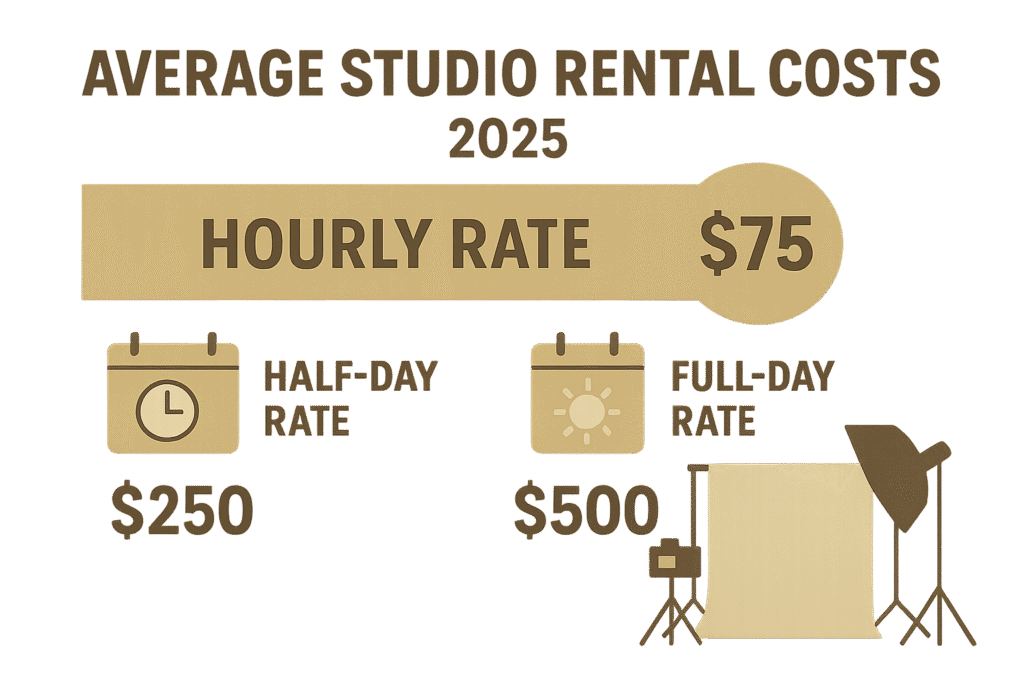
Booking Your Photo Studio Rental and Understanding Policies
A clear understanding of booking procedures and studio policies will prevent surprises and ensure a smooth experience.
- Booking Platforms: Many studios allow direct booking through their websites, while platforms like Giggster aggregate listings, offering a wide range of options and streamlining the booking process. These platforms often provide detailed descriptions, photos, and availability calendars.
- Booking Lead Times: How far in advance should you book? Studios typically require 2 to 3 weeks’ advance notice for weekday shoots in major cities like Vancouver. However, for popular studios or weekend bookings, especially during peak seasons, you might need to give 4 to 6 weeks’ notice. While last-minute bookings are sometimes possible, they limit your choices and negotiation power.
- Insurance Requirements: This is a critical aspect. Renters of photo studios are often required to carry liability insurance. For instance, many studios mandate Comprehensive Liability and Property Damage insurance with no less than $1,000,000 coverage. This protects both you and the studio in case of accidents or damage. Some booking platforms also offer damage protection coverage that you can add to your booking.
- Cancellation Policies: Familiarize yourself with the studio’s cancellation and refund policy. These vary widely. Some might offer a full refund with significant advance notice (e.g., 21 days). In contrast, others might have stricter policies, offering only a partial or no refund for cancellations within a short timeframe (e.g., 48 hours).
- Attendee Limits and Additional Fees: Be aware of any limits on the number of attendees or additional fees for exceeding a specified group size. Pricing tiers are often based on group size, so adding more people than initially booked could increase your hourly rate.
- Cleaning and Safety Policies: Understand the studio’s cleaning expectations and safety protocols. Especially since 2020, many studios have implemented specific health and safety measures.
Frequently Asked Questions about Photo Studio Rentals
Navigating the nuances of photo studio rentals can bring up several common questions. Here, we address some of the most frequent inquiries to help you prepare for your shoot.
What essential equipment should I expect with a basic studio rental?
While specific inclusions vary by studio and price point, a basic photo studio rental typically provides the fundamental tools needed for a professional shoot.
- Lighting: Expect to find basic artificial lighting setups, which often include:
- Strobes/Monolights: Powerful flash units for controlled bursts of light.
- Softboxes and Umbrellas: Light modifiers that diffuse and shape the light, creating softer, more flattering illumination.
- Light Stands: To position your lighting equipment.
- Grip Gear: Essential accessories for positioning and securing equipment:
- C-stands (Century Stands): Versatile stands for holding lights, modifiers, and backdrops.
- Sandbags: These are used to weigh down stands and prevent tipping.
- Clamps: Various clamps (A-clamps, Super Clamps) secure equipment or backdrops.
- Backdrops: Most studios offer a selection of seamless paper backdrops in standard colors like white, grey, and black. Some may also have fabric backdrops or painted walls. Studios like those in Kamloops might offer additional options like a 5×7 green screen upon request.
- Power: Access to sufficient power outlets is standard. For more demanding setups, inquire about dedicated circuits or higher amperage.
- Basic Amenities: Wi-Fi, a changing area, and restrooms are often included. Some studios offer makeup stations, lounge areas, or even kitchenettes.
Remember to confirm the exact list of included equipment with the studio before booking, especially if you have specific needs.
Do I need my own insurance to rent a photo studio?
Yes, in most cases, you will need your own insurance to rent a photo studio, especially for professional or commercial projects. This standard requirement is designed to protect both the renter and the studio.
- Liability Insurance: The most common requirements are comprehensive liability and property damage insurance. Many studios, particularly those listed on major booking platforms, mandate liability coverage of no less than $1,000,000. This insurance protects you against claims of bodily injury or property damage that might occur during your rental period.
- Damage Protection: Beyond liability, some studios or booking platforms offer optional damage protection coverage that you can add to your booking. This can cover accidental damage to the studio’s equipment or property during your use.
- Why It’s Important: Accidents can happen. A light stand might fall, equipment could be damaged, or someone on your team could get injured. Your insurance ensures you are covered for these unforeseen circumstances, preventing a significant financial burden.
Always check the studio’s specific insurance requirements before booking. If you don’t have commercial liability insurance, many photography organizations or insurance providers offer custom-made short-term policies for such rentals.
How can I ensure a successful shoot in a rented studio?
A successful studio shoot relies heavily on meticulous planning and effective communication. Here are some key tips:
- Pre-Shoot Visit (if possible): If time and logistics allow, visit the studio beforehand. This helps you visualize your shots, understand the space’s nuances (e.g., natural light direction, power outlet locations), and plan your setup.
- Detailed Shot List and Timeline: Create a comprehensive shot list, detailing every image or video clip you need to capture. Develop a realistic timeline that allocates time for setup, shooting, breaks, and breakdown. This will help you maximize your rental period and avoid rushing.
- Communicate with Studio Staff: Don’t hesitate to communicate your needs and questions to the studio staff. They are a valuable resource, offering insights into the space, equipment, and specific rules. Studios with high ratings, like Hiilite Photography in Kelowna, which boasts a 5.0 rating based on 45 reviews, often have knowledgeable and helpful staff who can significantly contribute to your experience.
- Plan Equipment Loading/Unloading: Know the studio’s loading procedures. Plan how to get your gear in and out efficiently to save time and effort.
- Bring Necessary Accessories: While studios provide core equipment, remember smaller essentials like extra batteries, memory cards, gaffer tape, extension cords, and any unique props or accessories your concept requires.
- Test Your Gear: Before arriving at the studio, ensure all your personal equipment is in working order. Test camera settings, lenses, and specialized gear to prevent technical delays.
- Be Mindful of Time: Studio time is money. Stick to your schedule as much as possible. If you anticipate needing more time, ask the studio to inquire about extending your booking.
- Leave No Trace: Respect the studio space. Leave it as clean and organized as you found it, or better. Adhere to any specific cleaning guidelines provided by the studio.
Following these tips, you can transform a rented space into a highly efficient and productive creative hub, ensuring your project comes to life exactly as envisioned.
Conclusion: Finding Your Perfect Creative Space
Renting a photo studio is a strategic decision that empowers creatives with control, versatility, and access to professional resources. From the soft, organic feel of a natural-light studio to the precise command offered by a blackout space or the seamless infinity of a cyclorama wall, the options are as diverse as your creative ambitions.
The key to a successful rental lies in meticulous planning and informed decision-making. By carefully matching the studio’s features to your project’s scope, ensuring essential equipment and amenities are available, and understanding the logistical aspects of booking, costs, and policies, you can transform your vision into a stunning reality. Remember the importance of adequate space, accessibility, and the peace of mind with proper insurance.
Whether you’re a seasoned professional or just starting a new creative journey, the right studio space can significantly lift your work. It provides a dedicated environment where your ideas can flourish without the distractions and limitations of on-location shoots. With the insights in this guide, your studio hunting will be easy, allowing you to focus on what truly matters: creating impactful and captivating visuals.
To explore a premier studio space that caters to diverse creative needs, consider visiting a comprehensive resource.

